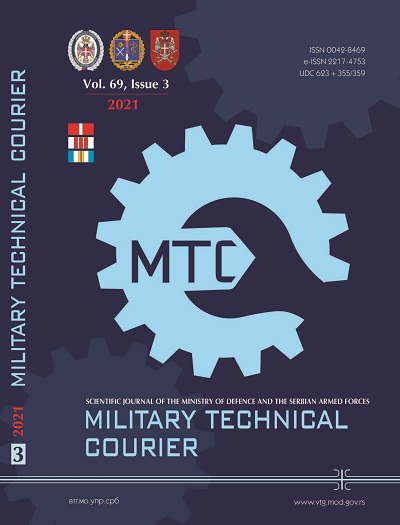Quantum electrodynamics divergencies
Abstract
Introduction/purpose: The problem of divergencies in Quantum Electrodynamics (QED) is discussed.
Methods: The renormalisation group method is employed for dealing with infini- ties in QED.
Results: The integrals in QED giving physical observables are finite.
Conclusions: The divergencies in QED can be treated in a consistent way pro- viding mathematical rigorous results.
References
Bethe H.A. 1947. The Electromagnetic Shift of Energy Levels. Physical Review, 72(4), pp.339-341. Available at: https://doi.org/10.1103/PhysRev.72.339.
Bollini, C.G. & Giambiagi, J.J. 1972. Dimensional Renormalization: The Num- ber of Dimensions as a Regularizing Parameter. Il Nuovo Cimento B, 12(1), pp.20- 26, Available at: https://doi.org/10.1007/BF02895558.
Dirac, P.A.M. 1927. The Quantum Theory of the Emission and Absorption of Radiation. Proceedings of the Royal Society of London A, 114(767), pp.243-65. Available at: https://doi.org/10.1098/rspa.1927.0039.
Dirac, P.A.M. 1934. Discussion of the infinite distribution of electrons in the theory of the positron. Mathematical Proceedings of the Cambridge Philosophical Society, 30(2), pp.150-163. Available at: https://doi.org/10.1017/S030500410001656X.
Dyson, F.J. 1949. The Radiation Theories of Tomonaga, Schwinger, and Feyn- man. Physical Review, 75(3), pp.486-502. Available at: https://doi.org/10.1103/PhysRev.75.486.
Feynman, R.P. 1949a. Space–Time Approach to Quantum Electrodynamics. Physical Review, 76(6), pp.769-89. Available at: https://doi.org/10.1103/PhysRev.76.769.
Feynman, R.P. 1949b. The Theory of Positrons. Physical Review, 76(6), pp.749-759. Available at: https://doi.org/10.1103/PhysRev.76.749.
Furry, W.H. 1937. A Symmetry Theorem in the Positron Theory. Physical Re- view, 51(2), pp.125-129. Available at: https://doi.org/10.1103/PhysRev.51.125.
Heisenberg, W. 1934. Bemerkungen zur Diracschen Theorie des Positrons. Zeitschrift für Physik, 90(3-4), pp.209-231. Available at: https://doi.org/10.1007/BF01333516 (in German).
Hooft, G.’t. & Veltman, M. 1972. Regularization and renormalization of gauge fields. Nuclear Physics B, 44(1), pp.189-213. Available at: https://doi.org/10.1016/0550-3213(72)90279-9.
Schwinger, J. 1948. On Quantum–Electrodynamics and the Magnetic Moment of the Electron. Physical Review, 73(4), pp.416-17. Available at: https://doi.org/10.1103/PhysRev.73.416.
Takahashi, Y. 1957. On the generalized ward identity. Il Nuovo Cimento, 6(2), pp.371-375. Available at: https://doi.org/10.1007/BF02832514.
Tomonaga, S. 1946. On a Relativistically Invariant Formulation of the Quantum Theory of Wave Fields. Progress of Theoretical Physics, 1(2), pp.27-42. Available at: https://doi.org/10.1143/PTP.1.27.
Ward, J.C. 1950. An Identity in Quantum Electrodynamics. Physical Review, 78(2), pp.182. Available at: https://doi.org/10.1103/PhysRev.78.182.
Wick, G.C. 1954. Properties of Bethe-Salpeter Wave Functions. Physical Re- view, 96(4), pp.1124-1134. Available at: https://doi.org/10.1103/PhysRev.96.1124.
Wilson, K.G. & Kogut, J. 1974. The renormalization group and the epsilon ex- pansion. Physics Reports, 12(2), pp.75-199. Available at: https://doi.org/10.1016/0370-1573(74)90023-4.
Proposed Creative Commons Copyright Notices
Proposed Policy for Military Technical Courier (Journals That Offer Open Access)
Authors who publish with this journal agree to the following terms:
Authors retain copyright and grant the journal right of first publication with the work simultaneously licensed under a Creative Commons Attribution License that allows others to share the work with an acknowledgement of the work's authorship and initial publication in this journal.
- Authors are able to enter into separate, additional contractual arrangements for the non-exclusive distribution of the journal's published version of the work (e.g., post it to an institutional repository or publish it in a book), with an acknowledgement of its initial publication in this journal.
- Authors are permitted and encouraged to post their work online (e.g., in institutional repositories or on their website) prior to and during the submission process, as it can lead to productive exchanges, as well as earlier and greater citation of published work (See The Effect of Open Access).

